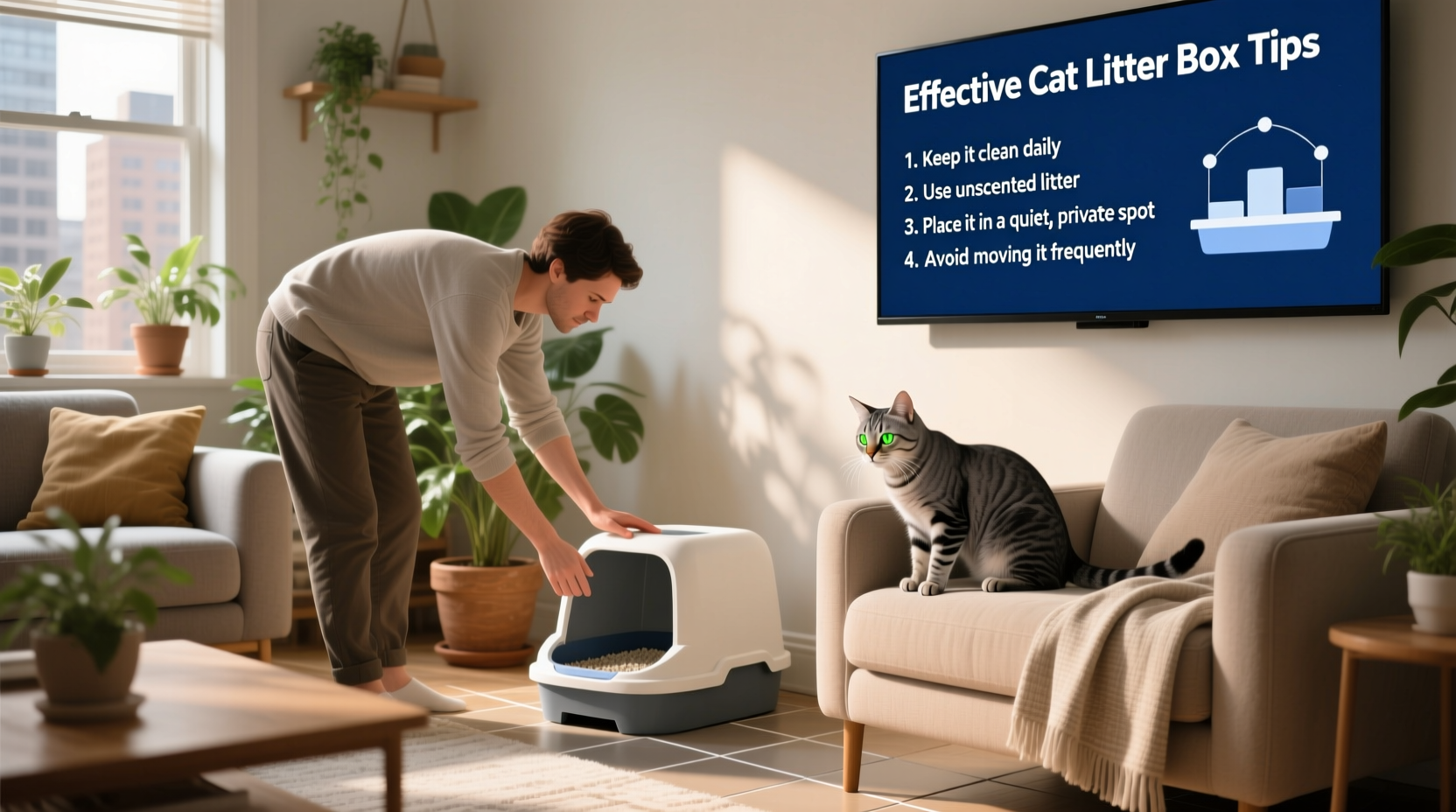Cat owners often face the frustrating and unsanitary issue of their feline urinating outside the litter box. While it may seem like a behavioral defiance, inappropriate elimination is rarely about spite. More often, it's a signal—of medical distress, environmental stress, or dissatisfaction with their bathroom setup. Addressing this issue requires more than just cleaning; it demands understanding the root cause and implementing targeted solutions. With patience and consistency, most cats can be retrained to use their litter box reliably.
Understand Why Cats Pee Outside the Litter Box

Cats are fastidious creatures by nature. When they begin urinating on carpets, furniture, or in corners, it’s typically due to one of three main causes: medical issues, litter box problems, or stress-related triggers.
Medical conditions such as urinary tract infections, bladder stones, diabetes, or kidney disease can make urination painful or frequent, prompting a cat to avoid the litter box. Older cats may develop arthritis, making it difficult to climb into high-sided boxes.
Litter box dissatisfaction is another major contributor. Factors like poor placement, inadequate number of boxes, unclean conditions, or the wrong type of litter can all discourage proper use. The general rule is one litter box per cat, plus one extra.
Environmental stressors—including new pets, moving homes, loud noises, or changes in routine—can also lead to marking behavior. Unneutered males are especially prone to spraying, but even spayed females may mark when anxious.
Step-by-Step Guide to Stop Inappropriate Urination
Resolving inappropriate urination involves a methodical approach. Follow these steps to identify and correct the underlying cause:
- Schedule a veterinary checkup – Confirm there’s no infection, pain, or chronic illness affecting your cat’s urinary habits.
- Count and assess your litter boxes – Ensure you have enough boxes (n+1 rule) and that they’re placed in quiet, accessible locations.
- Experiment with litter types – Try unscented, clumping clay or paper-based litters. Avoid liners or hoods if your cat seems hesitant.
- Clean accidents thoroughly – Use enzymatic cleaners to break down odor molecules. Regular household cleaners may leave scents that attract repeat incidents.
- Reduce stressors – Introduce calming aids like pheromone diffusers (e.g., Feliway), maintain routines, and provide safe hiding spaces.
- Block access to soiled areas – Temporarily close off rooms or use aluminum foil or double-sided tape to deter return visits.
- Reinforce positive behavior – Praise or treat your cat immediately after correct litter box use.
Do’s and Don’ts: Litter Box Management
| Do | Don’t |
|---|---|
| Use unscented, fine-grained litter | Use heavily perfumed or dusty litter |
| Scoop daily and change litter weekly | Let waste accumulate for days |
| Place boxes in quiet, low-traffic areas | Put boxes near noisy appliances or food bowls |
| Provide multiple entrance/exit options | Use covered boxes that trap odors and limit escape routes |
| Keep boxes away from washing machines or heaters | Place boxes in isolated basements where cats feel trapped |
Real Example: Bella’s Bathroom Breakdown
Bella, a 3-year-old domestic shorthair, began urinating on her owner’s bedroom rug shortly after a new puppy arrived. Her owner initially assumed she was jealous, but after a vet visit ruled out infection, a behaviorist suggested environmental stress as the culprit.
The solution involved adding a second litter box on the main floor (away from the puppy’s play area), using a Feliway diffuser in the bedroom, and creating a “safe zone” with elevated perches and toys. Within two weeks, Bella stopped marking and resumed normal litter box use.
This case illustrates how seemingly behavioral issues often stem from fear or insecurity—and how small environmental adjustments can yield dramatic improvements.
“Cats don’t pee outside the box to punish you. They do it because something is wrong—either with their body, their environment, or their sense of safety.” — Dr. Sarah Thompson, DVM, Feline Behavior Consultant
Essential Checklist for Cat Owners
- ✅ Schedule a vet exam to rule out medical causes
- ✅ Provide one litter box per cat, plus one extra
- ✅ Scoop waste at least once daily
- ✅ Use enzymatic cleaner on all accident sites
- ✅ Place boxes in quiet, accessible, low-stress areas
- ✅ Avoid sudden changes in litter type or brand
- ✅ Consider pheromone therapy (Feliway) for anxious cats
- ✅ Neuter or spay your cat if not already—this reduces territorial spraying by up to 90%
- ✅ Monitor interactions with other pets or household changes
- ✅ Reward correct litter box use with treats or affection
Frequently Asked Questions
Why does my cat pee on vertical surfaces?
Urinating on walls or furniture is typically spraying behavior, used to mark territory. This is common in unneutered males but can occur in any cat under stress. Neutering, reducing competition, and using pheromone diffusers can help eliminate this habit.
Can I train an older cat to use the litter box again?
Yes. Older cats may struggle due to arthritis, cognitive decline, or medical issues. Accommodate them with low-entry boxes, non-slip flooring, and consistent placement. Patience and positive reinforcement are key—even senior cats can relearn habits with support.
What if my cat only pees at night?
Nighttime accidents may indicate discomfort, anxiety, or a preference for solitude. Ensure the litter box is easily accessible at night and consider leaving a dim light on. If the issue persists, consult your vet—nocturnal urination can signal diabetes or kidney problems.
Final Steps Toward a Clean, Stress-Free Home
Stopping inappropriate urination isn’t about punishment—it’s about empathy. Your cat isn’t being defiant; they’re communicating discomfort. By addressing health concerns, optimizing litter box conditions, and minimizing environmental stress, you create a space where your cat feels safe and understood.
Consistency is critical. Stick to a cleaning schedule, monitor behavior closely, and celebrate small wins. Most cases resolve within a few weeks when the right strategy is applied.









 浙公网安备
33010002000092号
浙公网安备
33010002000092号 浙B2-20120091-4
浙B2-20120091-4
Comments
No comments yet. Why don't you start the discussion?